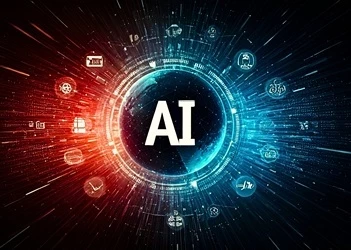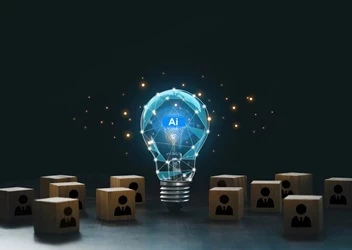Future pillars of AI-infused yet human-centric process intelligence
AI advancement demands a reassessment of business process management and process intelligence
Add bookmark
(BPM) and process intelligence have been integral to organizational improvement since the 1990s. Over the decades, technology has continually evolved to help organizations optimize their processes, even as fundamental customer needs have remained relatively stable. The core desire to enhance value creation and ensure compliance has been a constant.
However, with the advent of ChatGPT in 2022 and the rise of large language models (LLMs), the landscape is shifting. Generative AI technology is now supporting creative tasks that were previously beyond automation, signaling a significant change in business operations. This technological advancement demands a reassessment of BPM and process intelligence.
Let’s explore the future of BPM technology through its key pillars that will elevate current state-of-the-art BPM and process intelligence to new heights, driven by evolving customer needs and the capabilities of modern technology.
Watch the on-demand webinar The Future of Process Intelligence: Are you prepared for the impact of new technologies?
Future BPM technology: Smart, automated and embedded
As of 2024, BPM technology is already quite powerful. Process mining, for instance, helps organizations uncover their processes by analyzing digital traces within systems of record. By asking the right questions, such as identifying common process variants or pinpointing complexity-driving deviations, organizations can uncover significant improvement opportunities.
Yet, mere discovery isn’t enough. Standard processes (e.g. from an ERP system), while useful, often lack the differentiation needed to set a company apart from its competitors. What would a world of corporate clones, all operating identically, look like? Many organizations seek to distinguish themselves through unique operational approaches – be it digitization, customer-centricity or quality focus.
Harmonizing systems, processes and people towards a common goal is crucial. This harmonization typically occurs during the architectural blueprinting stage, often referred to as modeling, designing or documenting a process. Despite its importance, this stage is often unpopular among BPM experts due to the ongoing challenge of keeping dynamic processes up-to-date. However, effective management hinges on understanding these processes, which is why system implementations and automations are based on well-documented process blueprints (e.g. BPMN models). Training employees based on these models ensures consistency and efficiency in new ways of working.
Continuous improvement is essential for organizations to remain competitive. Like an athlete maintaining peak performance, businesses must continuously refine their processes to stay resilient, powerful and ambitious. This involves ongoing improvement and control processes, creating an organizational system that is both persistent and self-improving.
From expertise-driven to democratized process management
A significant bottleneck in BPM has always been the scarcity of process experts and expertise. Effective BPM requires a structured approach to documenting processes, which is often challenging due to the abstract nature of process thinking. Traditionally, process documentation has been done pragmatically, often resulting in sketches that are not sustainable. However, technology (Image 1) now makes it easier to formalize textual process descriptions into standardized formats like BPMN.

Image source: Software AG
Moreover, accessibility to these standards has improved, with portals integrating seamlessly into employees’ working environments. This accessibility is crucial for onboarding new employees quickly and efficiently.
Generative AI further democratizes BPM by providing instant access to information and guidance. Employees can now ask integrated management systems (IMS) relevant questions and receive AI-generated responses, reducing reliance on senior colleagues as the sole source of knowledge.
This use of technology may, depending on the task, drastically speed up the execution of BPM tasks (Image 2).

Image source: Software AG
Humans in the loop: “Augmented” BPM
Think about why we love our smartphones: they meet specific needs efficiently, whether for entertainment, information or communication. Similarly, employees need streamlined access to information and instructions to perform their tasks effectively. They don’t want to wade through complex instructions or seek permission from gatekeepers. They need contextual, situative and snippet-based instructions.
Future BPM technology will follow this pattern, providing employees with easy access to the information they need to solve business problems and complete tasks. This user-centric approach ensures that employees remain engaged and productive (Image 3).

Image source: Software AG
Gradual evolution toward future BPM
The transformation to future BPM will not happen overnight. Changes will materialize gradually, driven by customer demand and the availability of supporting technology. In the coming years, AI will semi-automate many tasks previously done manually, enhancing productivity and allowing BPM experts to focus on higher-value activities.
Looking ahead, it will be fascinating to reflect in a decade on how much BPM has evolved. Let’s schedule a date for 2034 to celebrate the advancements we will have achieved by then!


























